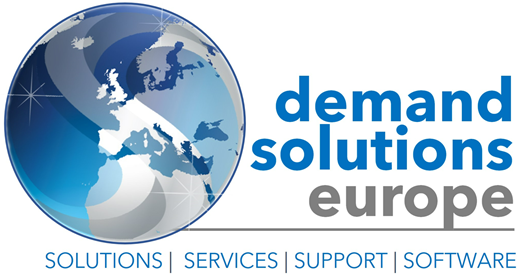
Use Digital Platforms to Help Implement Your Strategic Review
Learn how digital platforms are allowing supply chain businesses to better weather the storm, facilitating better planning, forecasting and performance.
When the coronavirus pandemic first hit China at the start of 2020, commentators immediately saw the danger it posed to supply chains. The combination of changing patterns of demand, delayed shipments, and factory closures all signalled trouble ahead. Since the crisis, we’ve seen all these issues play out across global supply networks, leading to disruptions, inefficiencies and lost revenues.
In response to this, the frequency of strategy and planning meetings is increasing. And this is highlighting the need for more effective predictive tools and analytical intelligence.
Unfortunately, a significant number of companies are still using “dumb” models that don’t use the latest in machine learning and artificial intelligence to analyse data from across their networks. They’re unable to flag up issues in advance or use data trends to predict future inventory requirements. And this is leading to dislocation and lost opportunities.
The priority for companies right now is to recover revenues. Commentators have suggested multiple methods for achieving this, from engaging in M&A moves to improving the consumer safety experience. But many of these recommendations impact turnover slowly. Right now, companies need solutions that will get them out of the current demand rut quickly.
How Digital Platforms Help To Implement Your Strategic Review
Demand planning may be one such remedy to get revenues flowing again fast. It offers a modest impact on EBIT earnings but takes effect rapidly. Businesses can begin implementing it now and see improvements in their financial performance within days.
Furthermore, demand planning allows enterprises to better adapt to sudden supply and demand shocks. Companies that had superior supply chain intelligence when the crisis first hit were better able to adjust their inventories, plan their product mixes, and predict future consumer demand scenarios than those that did not.
For example, before the crisis, a typical outdoor sports-focused e-commerce retailer might have predicted that it would sell £120 million worth of merchandise over the following twelve months. Following the pandemic, however, consumer preferences changed, with fewer orders for gym clothes and more for cycling equipment. The total volume of sales may have remained unchanged at £120 million, but the SKU mix could have altered dramatically.
A company with a sophisticated demand planning solution would have been able to adapt to these changing circumstances. It could have interrupted orders for low-demand SKUs and shifted its attention to other items fast. And that’s what makes these systems so valuable. The fictional e-commerce firm with the right digital platform can adjust inventory accordingly, without incurring as many unnecessary costs. Another company relying on traditional methods would not have been able to do this.
Digital platforms also help improve a company’s predictive capabilities. Research suggests that small improvements in supply chain forecast accuracy can lead to substantial reductions in product obsolescence, transport costs, and finished goods inventory – all of which lower costs and improve efficiency.
Importantly, digital platforms provide firms with opportunities to free up cash quickly. A European Demand Solution client, for instance, recently conducted a strategic review that found that sales were going to be crushed by the crisis. The firm – which is involved in supplying manufactured items for construction projects – saw that work was going to dry up in the near-term because of the COVID-19 lockdown. Naturally, it wanted to free up resources from inventory to maintain healthy cash flow.
Using Demand Solutions’ powerful digital platform, they were able to pinpoint the items they needed the most, and reduce expenditure on inventory that was non-essential to free up 240 Million Euros of cash; an exercise they would have struggled to achieve without it. Consequently, the firm was able to gain a competitive advantage over its rivals and is now in a much stronger position as we return to “the new normal.”
Using Digital Platforms For “What If” Analysis
C-suite executives often want to examine the counter-factual – so-called “what if” scenarios – when deciding on the direction in which to take their firms. Part of that involves modelling complex supply relationships and seeing how things might play out if the situation changed.
In the past, exercises like this were next to impossible. The analytics were just too involved and often relied heavily on unrealistic assumptions that negated real-world applicability. Digital platforms that use sophisticated artificial intelligence techniques, however, sidestep these classic stumbling blocks. They create a digital analogue of physical supply chain relationships, allowing executives to play around with them at will and see realistic representations of how things might pan out. Just like the real thing, all of the nuts and bolts are adjustable in the electronic format, except there are no operational consequences on the business. It’s the perfect sandbox.
Improved Supply Chain Analytics For Review Discussions
The distributed nature of digital supply chain platforms also plays an important role here. Whereas in the past, it was executives who exclusively contributed to overall planning and strategy, today, they can get supply chain information from multiple channels across the business, avoiding siloing. Potentially hundreds of data points and collaborators can contribute insights to your strategic review.
By working across multiple departments, you can calculate your true cost to serve and make it easier for your supply chain partners to adapt to your needs. In effect, these systems provide you with an “always-on” setup, allowing you to make adjustments to your orders around the clock.
Being able to conduct “what if” analysis makes a difference at the corporate level, the market level, and the product level. You’re able to correlate your SKUs with your KPIs and determine which lines are performing the best. At your strategy review, you are then able to evaluate granular information at the product level, telling you which you should focus on supplying, given your current business priorities.
Wrapping Up
In summary, therefore, supply chain efficiencies lead to substantial improvements in profitability and make their impact felt quickly. They allow C-suite executives to make more confident and informed strategic decisions on supply chain management than with an old-fashioned spreadsheet solution.



1 Comment
[…] Supply Chain Precision have developed their digital platform further, adding another time-saving tool for effective expense […]
Comments are closed.